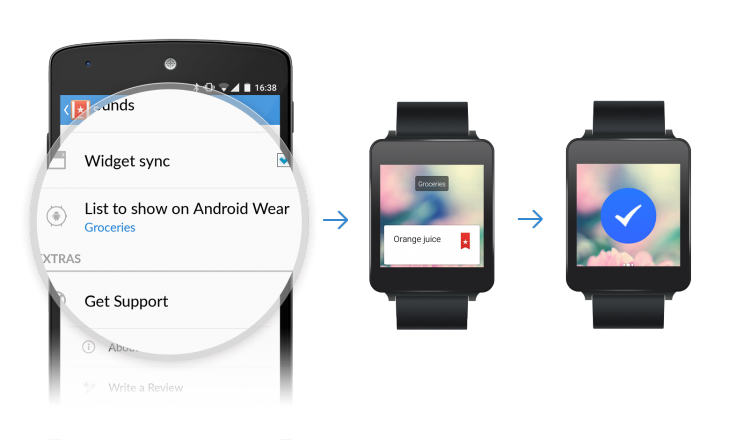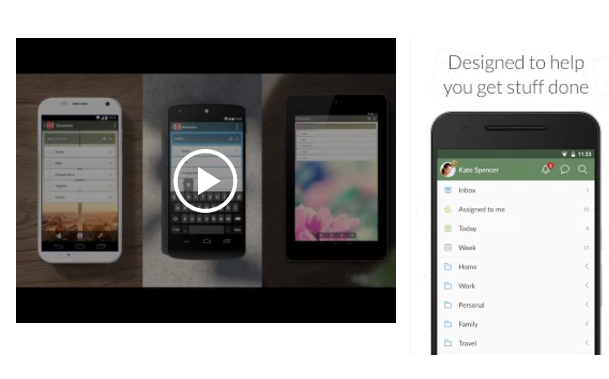

- Wunderlist android wear for mac#
- Wunderlist android wear mac os#
- Wunderlist android wear pdf#
- Wunderlist android wear update#
Wunderlist android wear for mac#
In 2013, Wunderlist for Mac was named App of the Year. On June 1, 2015, it was announced that Microsoft had acquired 6Wunderkinder, makers of Wunderlist, for between US$100 million and US$200 million. Wunderlist reached 10 million users in As of December 2014.
Wunderlist android wear update#
In July 2014 a new major update was released under the name of Wunderlist 3, with a new real-time sync architecture. In September 2013 the company announced to have over 5 million users. Instead they wanted to focus on creating a new version of Wunderlist, which was later on released in December 2012 under the name Wunderlist 2. In September 2012 the developers announced a shutdown of their service Wunderkit. Subsequently, the developers released a version prepared for the iPad with the name Wunderlist HD. In December 2011 the app received approval for the iPhone.
Wunderlist android wear mac os#
Initially, the program was created for desktop PCs and platforms such as Windows, Linux and Mac OS X. The first version of Wunderlist was published in 2011. The necessary seed funding was granted by High-Tech Gründerfonds and e42 GmbH. Frank Thelen responded and together Reber and Thelen developed first concepts for Wunderlist. In 2009 Wunderlist's CEO Christian Reber called on the social network platform XING for business partners to create a new to-do app. The Wunderlist website has no record of its release history but this is planned for the future. Right-to-left language text in the Wunderlist iOS application, however, is correctly aligned to the right. Īlthough right-to-left languages display correctly in Wunderlist's web browser application, the text is incorrectly justified to the left (as normal for left-to-right languages).
Wunderlist android wear pdf#
Notes can, however, be printed to PDF from the Wunderlist Web App by use of a virtual PDF printer or Google Chrome's "Save as PDF" feature. Wunderlist can export notes to the JSON file format, but cannot save as PDF or HTML. Later that month, a Calendar Feed feature was released for Wunderlist, allowing a user's pending tasks to appear in other calendar services such as Google Calendar, Microsoft's Calendar, Apple's Calendar, Slack.

Users could now access and link their Dropbox files to their Wunderlist tasks.

In October 2014 Wunderlist announced its first integration, with cloud storage company Dropbox.

In 2015 Microsoft released Wunderlist for Apple Watch devices. Wunderlist can also be downloaded for a number of devices, including Windows 7 and 8 computers, Mac computers, Android phones and tablets, iOS (iPhone and iPad, v 7.0 and later), Kindle Fire, Chromebook, and Windows Phone. Users can sign in and use Wunderlist in a web browser, with no download required. In May 2015, Wunderlist added an API so that people can create or modify Wunderlist tasks in other apps, and get alerts for Wunderlist tasks when they're in those apps. Additionally, Pro users can choose from an additional 10 backgrounds. With Wunderlist Pro, several additional features can be used, including unlimited assigning, unlimited file upload size, and unlimited number of subtasks (the free version of Wunderlist allows 25 subtasks per task). With the company's browser and sharing extension known as "Add to Wunderlist", content from the Web can be added to Wunderlist from Chrome, Firefox, Safari, iOS and Android. Using a feature known as "Mail to Wunderlist", users can send or forward emails to to add tasks to their Wunderlist accounts. The user adds lists to categorize tasks, and can place these lists in folders to organize their structure. Tasks can also be organized with #hashtags. Through the "Detail View," users can add due dates (including repeating due dates), reminders, assignees, subtasks, comments, files and notes to tasks. These lists can be shared with other Wunderlist users. Wunderlist allows users to create lists to manage their tasks on many devices, mobile as well as desktop. 1.3 Differences from competing applications.


 0 kommentar(er)
0 kommentar(er)
